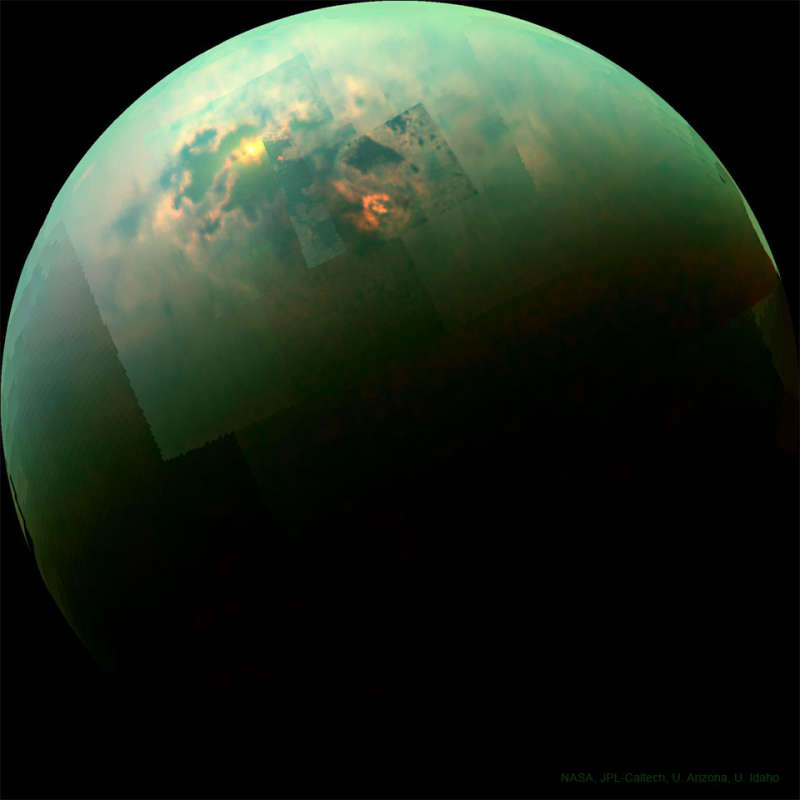Titan Seas Reflect Sunlight

Explanation:
Why would the surface of Titan light up with a blinding flash?
The reason: a
sunglint from liquid seas.
Saturn's moon
Titan has numerous smooth
lakes of methane that, when the angle is right,
reflect sunlight as if they were mirrors.
Pictured here in false-color, the
robotic Cassini spacecraft
that orbited Saturn from 2004 to 2017 imaged the
cloud-covered Titan in 2014 in different bands of cloud-piercing
infrared light.
This
specular reflection was so bright it
saturated one of Cassini's infrared cameras.
Although the
sunglint was
annoying -- it was also
useful.
The reflecting regions confirm that northern
Titan
houses a wide and complex array of seas with a geometry that
indicates periods of significant evaporation.
During its numerous passes of
our Solar System's most mysterious moon, Cassini has revealed
Titan to be a world with
active weather -- including times when it rains a liquefied version of
natural gas.
Authors & editors:
Robert Nemiroff
(MTU) &
Jerry Bonnell
(USRA)
NASA Web Site Statements, Warnings,
and Disclaimers
NASA Official: Jay Norris.
Specific
rights apply.
A service of:
LHEA at
NASA /
GSFC
& Michigan Tech. U.

